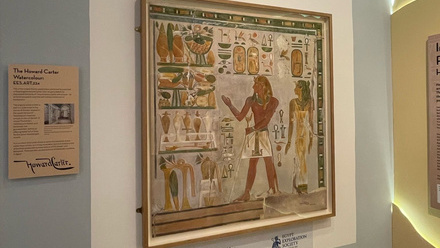How to build an Egyptian pyramid
Man fears time, but time fears the pyramids
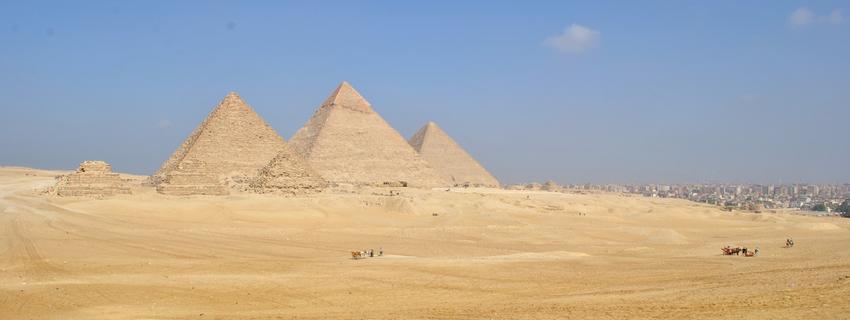
The pyramids of Giza, west of modern Cairo, date to the 4th Dynasty of the Old Kingdom (c. 2613 to 2494 BCE, around 4,500 years ago).
One glance at the colossal stone blocks of the Great Pyramid, teleports us back through time, to when the Egyptians built this mighty edifice for their ancient ruler, Khufu, almost 5,000 years ago. Here, in around 2600 BCE, Khufu was laid to rest in a solid granite sarcophagus with the aim of transforming him into a semi-divine being to join his ancestors in the stars.
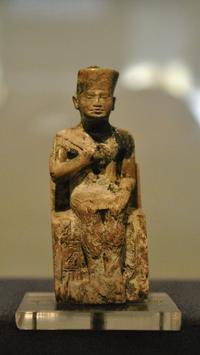
Left, this small ivory statuette of Khufu, found by the Egypt Exploration Society at Abydos in 1902, is the only known complete figure of Khufu. It is only 7.5cm tall – much smaller than his pyramid tomb! His name is written on the right hand side of his throne. Today the statuette is on display at the Egyptian Museum in Cairo.
Who built the pyramids?
Khufu’s architect, Hemiunu, and an army of artisans, sculptors, masons, metalworkers and more, worked tirelessly to honour their king. Many lived nearby, in a settlement especially built to house them at the edge of the fertile floodplain. Here, new materials for the vast building site were brought and processed before being transported to the pyramid itself. Inspectors, like Merer, maintained a nationwide supply chain providing the project with workers, food and drink rations, tools, clothes, medical treatments, and building materials. His papyrus diary, found preserved in caves at Wadi el-Jarf on the Red Sea in 2013, offers a window into this complex, state-controlled world.
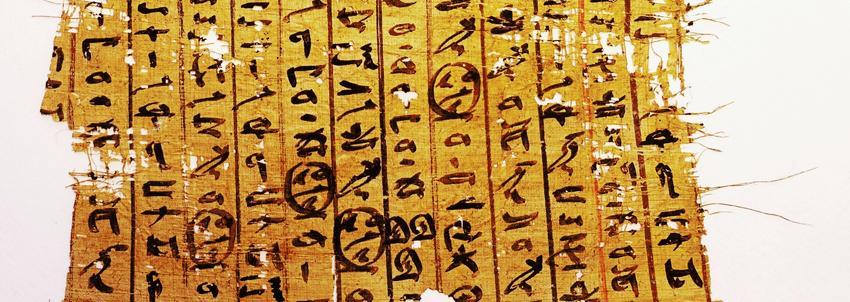
The diary of Merer, discovered by a French-Egyptian mission at Wadi el-Jarf in 2013 tells us about how the pyramids of Giza were supplied with materials. Image courtesy of Prof Pierre Tallet, Director of the Institut français d’archéologie orientale.
The development of pyramids
Scholars are not certain how the 2.3 million stone blocks, averaging between 2.5 and 15 tons each, were carefully moved into place. The ancient builders probably used a combination of ramps, levers, and pulleys to lift the stones into position. The core of the pyramid was made of local quarried sandstone from the surrounding plateau, which was encased in white limestone brought across the river Nile by boat from Tura (south of modern Cairo). This limestone outer casing was cut and polished smooth to give the pyramid its distinctive sides. It was finished by a capstone or ‘pyramidion’ at its top, gilded in bright electrum (a natural mix of gold and silver) to reflect and radiate the rays of the sun – the pyramid becoming a symbol in stone of the sun’s power.
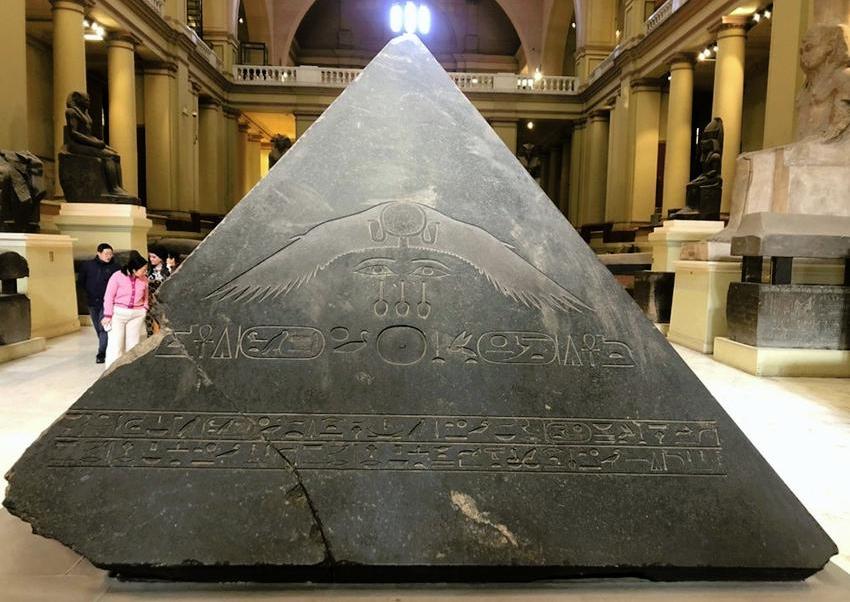
Each pyramid was crowned by a pyramidion like the one shown here. This is from the pyramid of Amenemhat III at Dashur and is on display in the Egyptian Museum, Cairo today. It is carved from a single piece of basalt and inscribed with the names of the king. Amanemehat III ruled Egypt during the 12th Dynasty, Middle Kingdom (c. 1860 to 1814 BCE).
But not all pyramids looked like this. The Great Pyramid was only achieved after generations of trials. First, the Step Pyramid of Djoser at Saqqara arranged six shallow rectangular mastaba tombs atop one another to create its classic stepped shape. Later, Khufu’s father, Sneferu would construct at least two pyramids. The first was designed with an angle too steep to support its sides, resulting in a bent appearance. His second, the Red Pyramid at Dashur, was the first to achieve smooth sides. The Great Pyramid was, then, an early innovator in its construction. Even more innovative was the arrangement of its interior spaces. Most were within the core of the structure rather than excavated beneath it, something made possible thanks to weight-relieving spaces above the chambers.
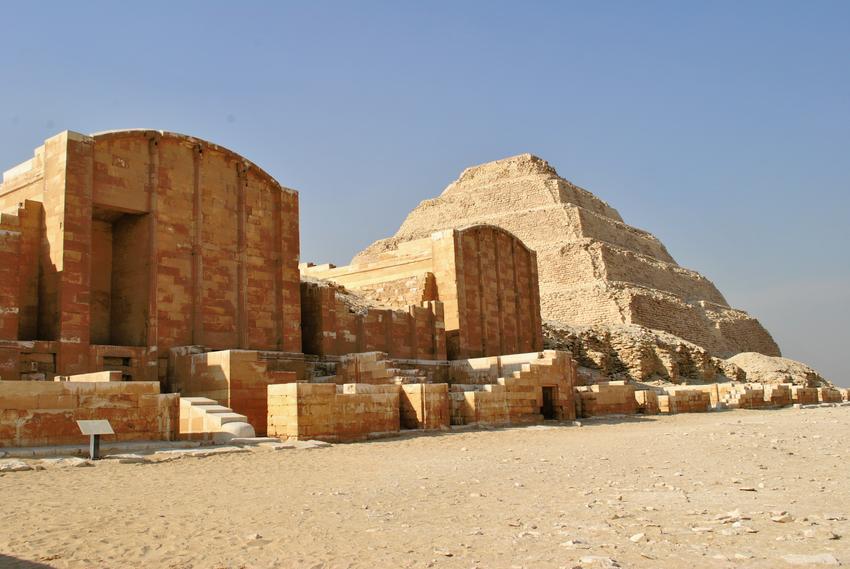
The Step Pyramid at Saqqara is the tomb of King Djoser of the 3rd Dynasty (c. 2686–2648 BCE). It was the first funeral complex to be constructed in stone, including Egypt’s first pyramid. It was originally a small rectangular structure which was made taller by the addition of further platforms on top.
The tallest structure in the world
Pyramid building would continue for generations after Khufu, throughout Egypt’s Old Kingdom, before stopping around 4,200 years ago (c. 2200 BCE). At this point, the Egyptian state collapsed into regional ruling families. Pyramid building was reintroduced again around 300 years later by the founders of Egypt’s 12th Dynasty, during the Middle Kingdom. None would match the dizzying heights of Khufu’s builders (at 146 m tall), and his tomb would remain the tallest structure on the planet until 1311 CE when the spire of Lincoln Cathedral in England surpassed it – though that collapsed in 1549!
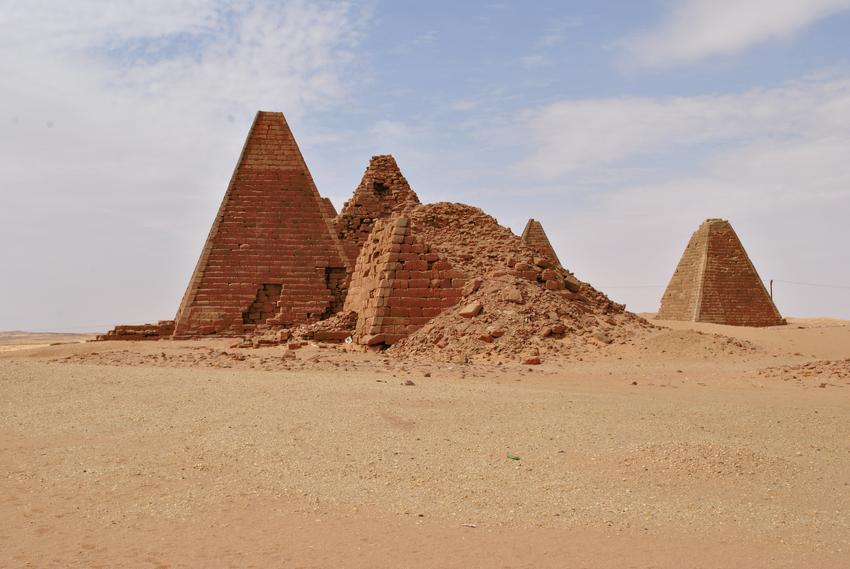
Egypt is not the only ancient civilisation to bury their elite in pyramids. Sudan, to the south of Egypt, continued the tradition for much longer and, today, has more pyramids than Egypt. These pyramids, at Gebel Barkal, are close to the ancient city of Napata where the Nubian rulers who controlled Egypt during the 25th Dynasty (754-656 BCE) lived.
Today, the Great Pyramid is one of hundreds of pyramids constructed in Egypt and northern Sudan. They inspire awe, fascination, and a little mystery too. The exact method for constructing these monuments is not fully understood yet, but there is no denying the staggering effort and technological ingenuity of the ancient Egyptians and Sudanese who achieved it.



